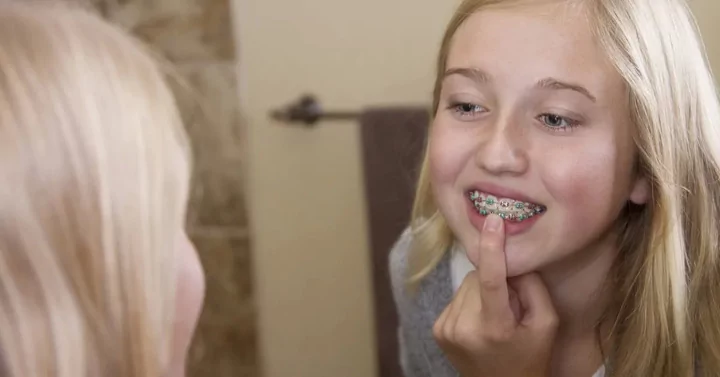There are several options available to anybody seeking corrective treatments to straighten their teeth. Here are the pros and cons of the most popular options including Invisalign vs braces.

Braces are everywhere. So much so that 80% of teenagers now see an orthodontist and a quarter of all orthodontic patients are adults.
Although traditional brackets are now in vogue as demonstrated by the models who walked the Hood by Air runway show in 2015, they don’t appeal to everyone. Nor do all ortho patients need braces.
The choice between Invisalign vs braces has never been tighter. Today’s Invisalign trays work harder, and braces are now more comfortable and less expensive.
Both Invisalign and traditional braces offer unique advantages and suit a particular kind of patient. Are you stuck deciding between orthodontic options? We put together a guide to help you make the best decision for your smile.
Do You Need Invisalign or Braces?
Straight teeth are more than an aesthetic. They also help prevent mouth problems that become a real downer later in life.
A significant part of your decision comes down to the state of your teeth, gums, and jaw.
Thanks to advancements in technology, most people now have the option to choose between the two. In the past, dentists reserved Invisalign for cosmetic patients or those who wanted simple corrections. Braces picked up the slack for most dental work.
Today, Invisalign addresses more cases than it did before including complex cases. They also work for patients of all ages and are a preferable option for the youngest visitors to the dentist’s chair.
Even still, some people will find Invisalign isn’t an option for them. To find out if it will work for you, ask for a consultation from your dentist.
If you have the option, you’ll need to think carefully about your priorities. Outside of exceptional cases, both traditional braces and Invisalign now come with a similar total bill.
To figure out which one is right for you, you need to ask yourself the following questions:
- Do I have the attention span to remember to put Invisalign trays back in?
- Am I willing to trade efficiency for invisibility?
- Will I need more dental work in the future if I don’t resolve it now?
- What kind of customization do I want with my smile?
- What are my short and long-term goals for my smile?
- What kind of coverage does my insurance company offer?
Only you can answer these questions for yourself. To help you out, we put together a list of pros and cons for Invisalign vs braces.
Pros and Cons of Invisalign
Invisalign comes with advantages making the system attractive to children, adolescents, and adults. Some of the pros of Invisalign include:
- Inconspicuous treatment options
- Easier to maintain good oral hygiene
- Removable trays for eating and drinking
The system targets the three things which bug people about braces and gives you more freedom during your treatment.
This doesn’t mean there aren’t cons. People who take their trays out too often will grow their treatment length and thus the cost of their treatment. You can also lose your trays, which means you’ll need to buy more.
Finally, choosing Invisalign when braces might better serve you could ultimately cost you more money than if you went with braces in the first place. Given that braces and Invisalign now compare in price, it’s essential to make a decision that works best for your teeth.
Pros and Cons of Braces
We are all familiar with the concept of braces, but if you haven’t checked in in a while, you’ll find they changed. Wires and brackets are
more sophisticated now than before, which allows for greater accuracy.
That’s good news for candidates for braces: the most complicated dental problems can now be solved faster than before.
Braces work best for people who need extra pressure to create an aligned bite. It’s also ideal for patients who may find the ability to take out the dental trays means they forget to put them in or even lose them on a regular basis.
The pros of braces include:
- Greater pool to draw from for success rates
- Customized smiles using new software and wires
- Works faster and more efficiently in complicated tooth movements
- Fewer adjustments and more comfortable than before
It does come with cons – and you can see most of them.
People avoid braces because it’s a period of your life which is well documented. Your braces show up in any photo capturing a toothy smile and everyone you talk to will see them. While braces are more ubiquitous than before, they may still make some people uncomfortable or insecure.
Other issues with braces include difficulties in oral hygiene. In addition to brushing and flossing, you need to clean your wires and brackets. Failing to do so could leave marks on your teeth.
Your orthodontist will also request the avoidance of certain foods. Apples and chewing gum are banned. But you’ll also find foods you’ll struggle with to eat or get caught in your braces like popcorn kernels.
Finally, braces can be painful, particularly after an adjustment. They can also work against patients with gum disease.
Invisalign vs Braces: What Will You Choose?
The race between Invisalign vs braces is tighter than ever with both sides reaching to the middle to become the people’s choice of orthodontic wear.
If you’re lucky enough to have the choice, make your decision according to the goals you have for your smile. Be honest and realistic about how you’ll wear either so when you’re all done, you’ll have the whitest, brightest smile you’ve ever had.
Still wondering: Is Invisalign right for me? Ask the experts. We take on new patients and offer second opinions to make sure you get the smile you deserve.

